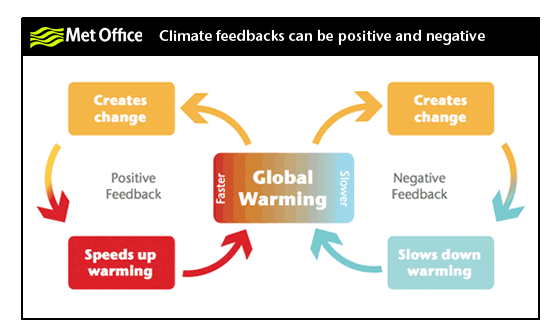 |
| Credit: pixabay |
 |
| Credit: www.powerplantccs.com/Met Office |
"An interaction between various processes of climate system is called climate feedback, where in the result of one process triggers changes in the another process that in turn will influence the initial one. There are many climate feedback mechanisms that can either amplify or diminish the effects of climate change contributing factors. A positive feedback is one that can amplify the effects of climate change while negative feedback is one that diminishes the same."
And a list of the climate feedbacks, positive (but not good!) and negative.
The above link contains an interesting paragraph on clouds, which I hadn't really thought about other than often finding them pretty or portentous:
"Clouds are the elephant in the living room. They're obviously extremely important, but they are very poorly understood. High, wispy cirrus clouds have a warming effect, because they are made of ice crystals, which makes them much more nearly opaque to outgoing longwave infrared than to incoming visible and near-IR solar radiation. Lower clouds, which are made of liquid water droplets, have a strong cooling effect in daytime, but a warming effect at night. How clouds are affected by warming or cooling climate is very complex."
No comments:
Post a Comment